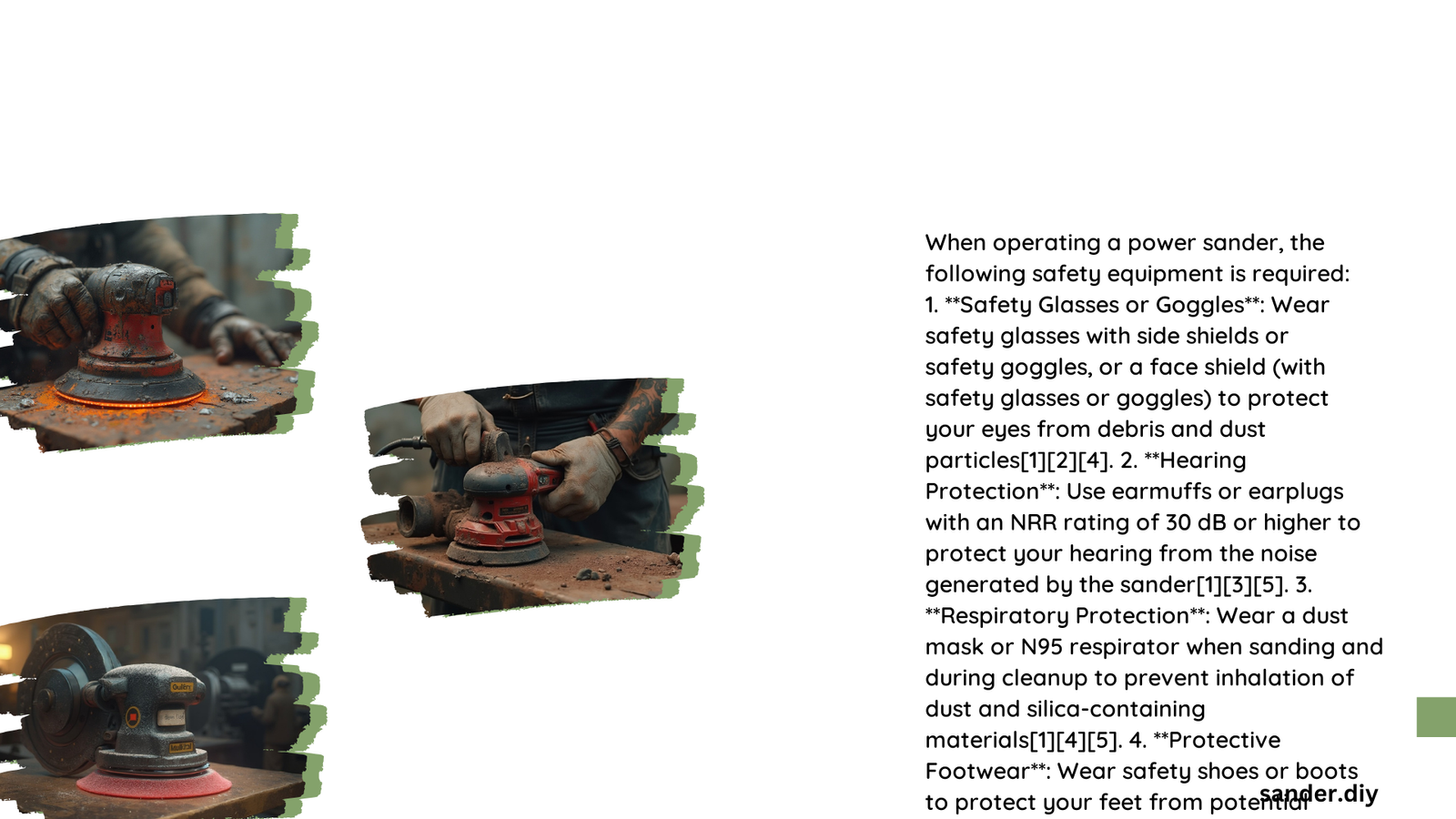Power sanders are powerful woodworking tools that demand comprehensive safety precautions. Operating these machines without proper protective equipment can lead to serious injuries involving eyes, respiratory system, hearing, and skin. Professional woodworkers and DIY enthusiasts must understand and implement a multi-layered safety approach that includes specialized protective gear designed to mitigate risks associated with dust, debris, noise, and potential mechanical hazards.
Why Is Safety Equipment Critical for Power Sander Operation?
Safety equipment serves as a critical barrier between the operator and potential workplace hazards. Power sanders generate significant dust, produce loud noise, and create high-velocity particle projections that can cause immediate and long-term health complications.
What Eye Protection Do You Need?
| Protection Type | Specifications | Recommended Features |
|---|---|---|
| Safety Goggles | ANSI Z87.1 Compliant | – Polycarbonate lenses |
| – Side shield coverage | ||
| – Impact-resistant material |
Key Eye Protection Requirements
- Full coverage against horizontal and vertical particle trajectories
- Minimum impact resistance rating
- Fog-resistant lens coating
- Comfortable, secure fit
How Should Respiratory Protection Be Selected?
Respiratory protection is crucial when operating power sanders due to wood dust generation. Recommended respiratory equipment includes:
- N95 Respirator Masks
- Filters 95% of airborne particles
- Tight-seal design
-
Disposable or replaceable filters
-
Half-Face Respirators
- More comprehensive protection
- Replaceable cartridge system
- Suitable for extended woodworking sessions
What Hearing Protection Prevents Damage?
Hearing protection mitigates risks from continuous loud machinery noise:
- Noise Reduction Rating (NRR) Requirements
- Minimum 25 decibel reduction
- Options include:
- Foam earplugs
- Electronic earmuffs
- Custom-molded ear protection
Which Hand and Body Protection Matters?
| Protection Area | Recommended Equipment | Performance Standards |
|---|---|---|
| Hands | Cut-resistant gloves | ANSI/ISEA 105-2016 Level 2+ |
| Body | Long-sleeve, fitted clothing | Flame-resistant materials |
| Feet | Steel-toe work boots | ASTM F2413-18 standard |
Additional Safety Considerations
- Workspace Preparation
- Ensure proper ventilation
- Install dust collection systems
-
Maintain clean, organized work area
-
Personal Preparation
- Remove jewelry
- Tie back long hair
- Avoid loose clothing
Cost Estimates for Safety Equipment
| Equipment Type | Price Range | Replacement Frequency |
|---|---|---|
| Safety Goggles | $10 – $30 | Annually or after damage |
| Dust Masks | $20 – $50 (20-pack) | Per project/monthly |
| Hearing Protection | $10 – $50 | Annually |
| Work Gloves | $10 – $30 | Every 3-6 months |
Final Safety Recommendations

- Regularly inspect all safety equipment
- Replace damaged protective gear immediately
- Stay updated on latest safety standards
- Participate in safety training programs
Reference:
– OSHA Woodworking Safety Guidelines
– ANSI Safety Standards
– National Safety Council Resources
